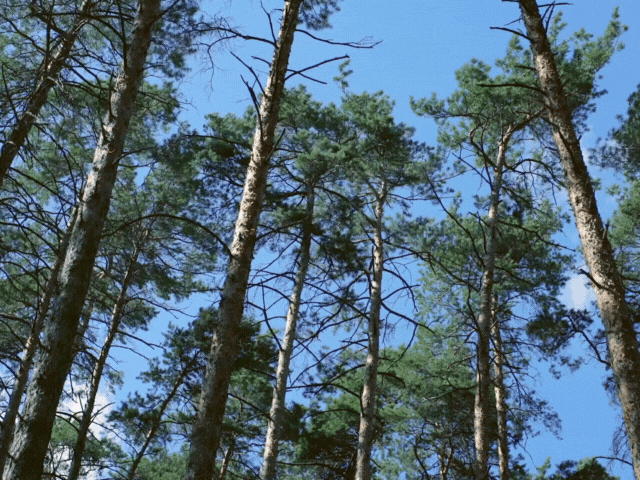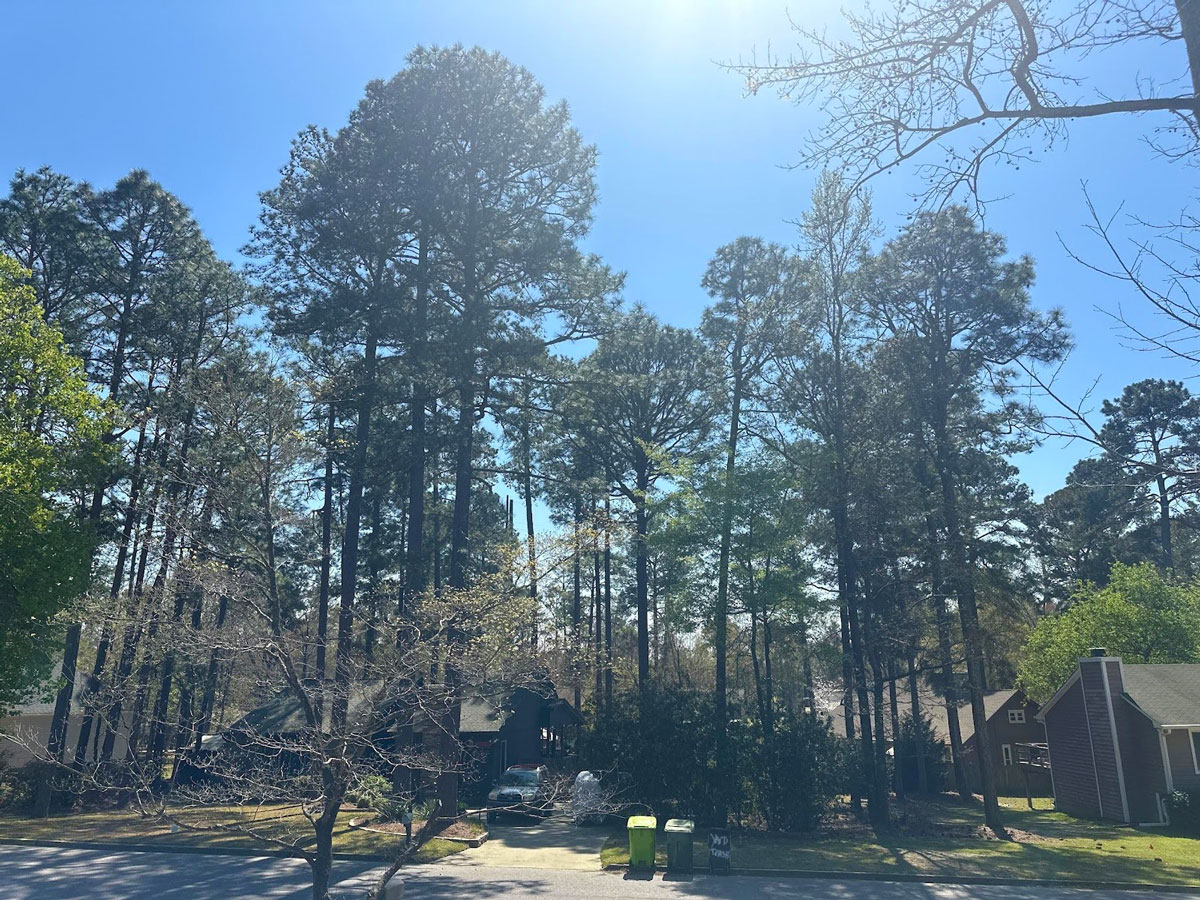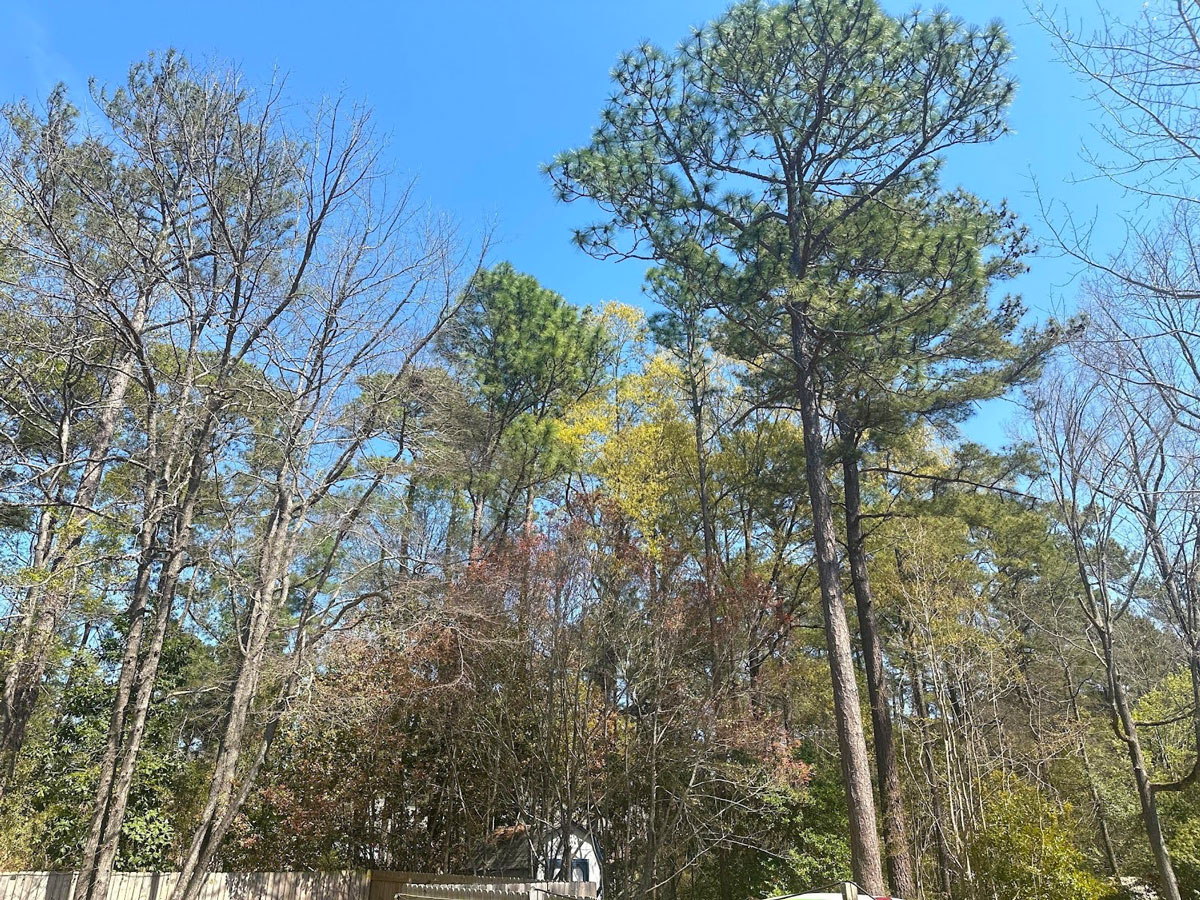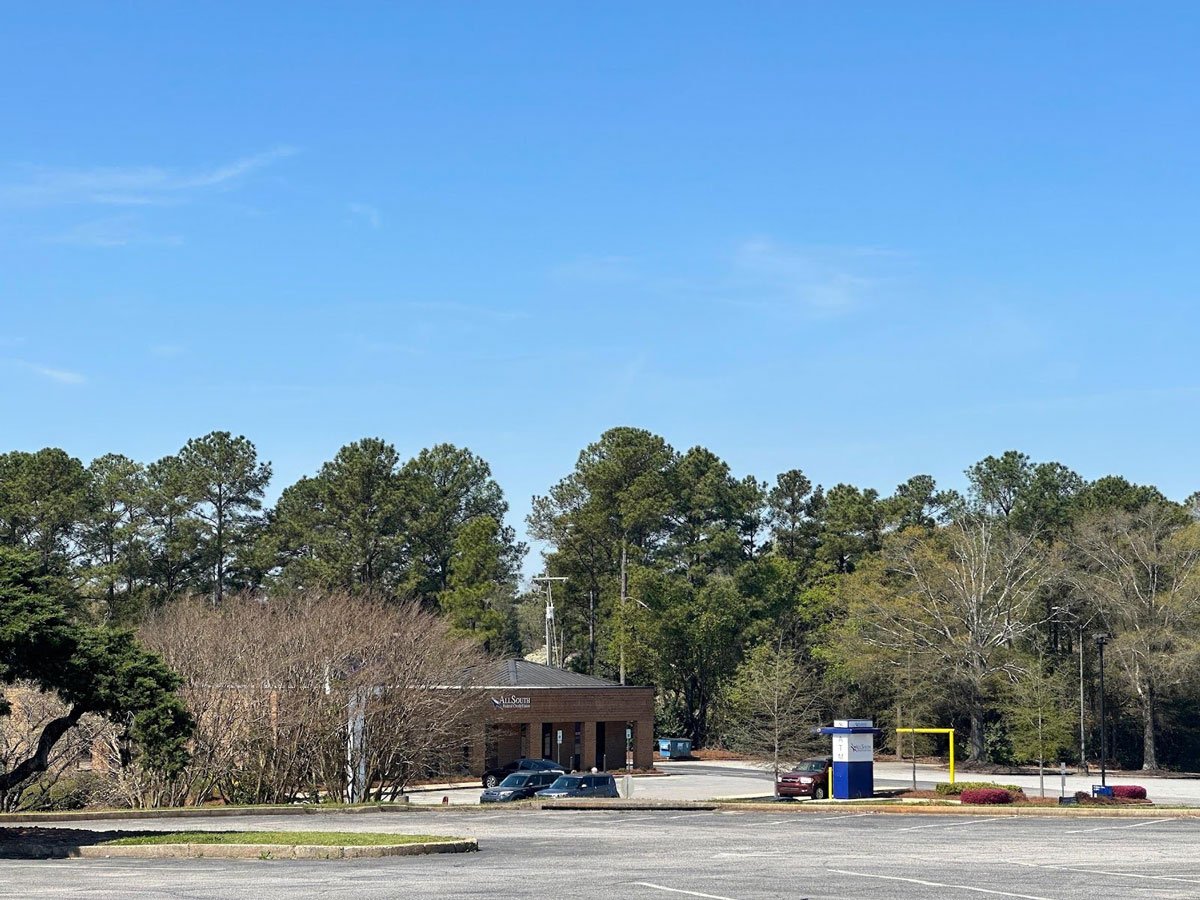In the Pines, In the Pines, Where the Sun Don’t Ever Shine
It’s the middle of the night. A storm system moves in and the rolling thunder wakes you. You look out the window to see how bad it is getting. That’s when the fear sets in. “These Pines are swinging in the winds and they’re going to come down on my roof.”
Now, we’re not all Arborists or tree work salespeople, so I doubt you hear this tale as often as I do, but I would venture to guess that even if you don’t have Pine trees, you have heard someone share this same fear before. It’s natural. A Pine tree, even smaller ones, are several tons of swinging, swaying, nightmare creating lumber. The news definitely does not help the situation. Every time a major storm hits (and I mean major storm with the sort of winds that come with category rankings not just speeds) it is as if the news van is sent out with one singular goal: find a Pine tree down on a house.
In doing my diligent research to prepare to write this blog for you, I came upon the clearest way to say everything I hope to say in one succinct sentence – “In a windstorm, don’t fear the trees that sway, fear the one that doesn’t.”
I sing the praises of the Pine pretty regularly, both because I have a reasonable understanding of how the trees work, including the sway, and because I understand the overwhelming importance of the Pine tree in the overall landscape of America. Let’s break both down a bit, then we’ll cover a couple things to be on the lookout for that can tell you if you should be worried about your Pine.
And We Shiver When the Cold Wind Blows
Pine trees are built for this. Be it a breeze rolling through Cheaha Mountain in Alabama or a heavy coastal wind coming off the water in New England, Pine trees are made to sway in the wind.
I’m not a scientist and won’t pretend to be, it was honestly the worst of my core subjects all throughout my education, but the science on this one is fairly straightforward. “Swaying is a tree’s natural method for the dissipation of the energy exerted upon it by the wind, but there exists the dangerous possibility of achieving an amplitude of sway greater than the tree’s elastic capacity to return upright. That’s when trees fall down” (Bunce, 2017).

Under the stress of extreme wind, or in an extended period of sustained winds, yes, Pines are prone to break even with all the elasticity we see on display in them regularly. But we must also understand that Pines, having this enhanced elasticity, are capable of bending, swinging and swaying in the wind so much more than a lot of the other common trees we see on a daily basis but are significantly less fearful of.
Which brings up another question: what should we do with the rest of our trees to try to keep them from coming down in the wind?
This is nature, after all, and the only surefire way you can eliminate the potential for risk and danger is to clearcut every tree and wait out what is left of the global oxygen supply with no stress of a tree coming down on you. Obviously that’s not the route we want to go, nor do I ever advocate for the removal of a tree unless it is a significant hazard, typically because it is dying or already dead.
The University of Florida did extensive research to find ways to improve the impact of wind on trees before and after various efforts at wind stress control through pruning. Their research (available here: https://hort.ifas.ufl.edu/woody/wind-research.shtml) concluded that pruning can make a significant difference in the way wind moves through the trees and the ability of the tree to bounce back following the winds. I hesitated to share the full link, as reduction pruning has the most immediate impact on the effects of wind on the tree but the worst overall long term effects for the ongoing health of the tree, but that is something we could discuss further and consider on a case by case basis (though I am rarely going to support the idea).
The second most effective effort was in canopy thinning. Canopy thinning is the selective removal of internal canopy limbs to a specified percentage of overall canopy. This pruning includes the removal of dead/dying, crossing/rubbing and structurally deficient limbs within the internal canopy to improve the overall structure and health of the tree. For the sake of the conversation on wind throw and wind stress, thinning opens the internal canopy to allow the wind to move through the tree rather than meet a wind barrier and tug at it like a kite.
Another important consideration that can drastically reduce risk posed by winds is end weight reduction pruning. This reduces the length and weight on the end of longer, heavier branches, such as those that stick out over the roof, back to an established pruning node. This allows the tree to maintain some semblance of its existing balance, pruning back to the node aids in compartmentalization and pruning cut recovery in the tree, and when the heavy winds start blowing there is a lot less end weight whipping back and forth on that limb to test out the elasticity. Reduction pruning goes a long way in keeping those longer limbs from being subjected to too much tension and coming down.
Like the Tall Trees on the Mountainside, My Roots are Buried Deep
Walk outside and take a look at roughly a 45 degree angle upward. Scan from side to side. Now I want you to do the same thing and imagine the Pines are gone. How different does the view look?
This is the view from my front porch (and no, I didn’t apply a filter, that’s just how bad the pollen is in the air today):

This is the view off my back porch:

This is the view from the parking lot at Dutch Square where the crew is setting up the carnival rides so I popped through to see if any of it looked safe enough to brave with my children:

But that’s just what I see during the day here around the Columbia area. What does the rest of the US look like? The state of New Hampshire is 85% forested land, 78% in Vermont, 68% of both the state of South Carolina and Georgia. Maine is actually called The Pine Tree State where 90% of the state is covered in forest. White Pine and Balsam Fir dominate the 17.6 million acres of forest.
What happens if they were to all go away?
Pines are enduring. Pines replenish. Pines sequester carbon and provide oxygen and serve as a natural habitat for all sorts of our woodland friends and birds.
Please stop cutting them down if they don’t have to be.
Sources:
- Bunce, Cynthia. “Wind and Trees 101: To Touch A Tree”. Stormwise Forest Management (2017). https://stormwise.uconn.edu/2017/05/08/wind-and-trees-101-to-touch-a-tree/#:~:text=Swaying%20is%20a%20tree’s%20natural,That’s%20when%20trees%20fall%20down.
